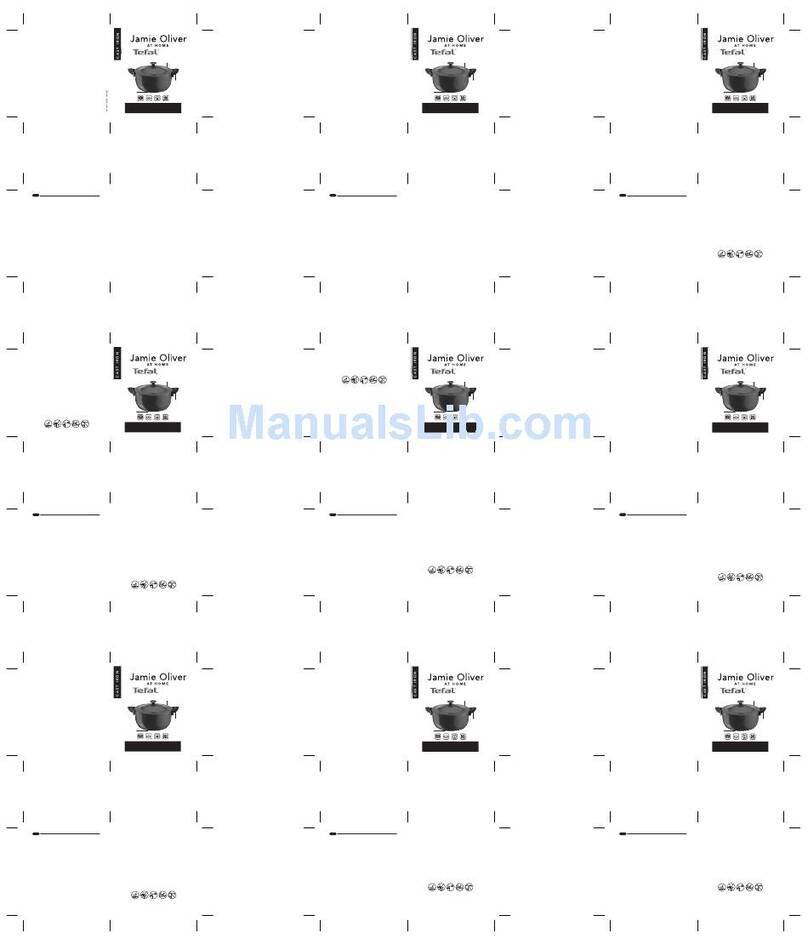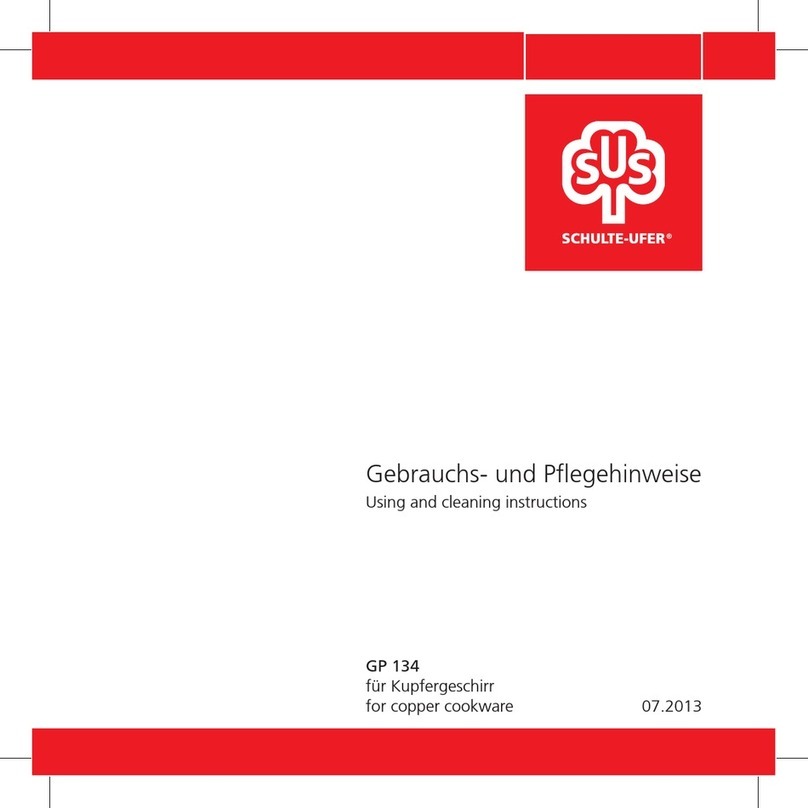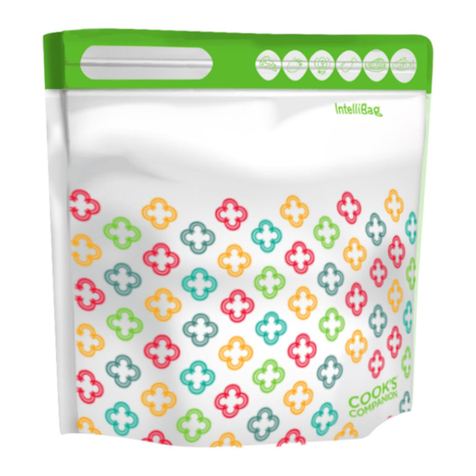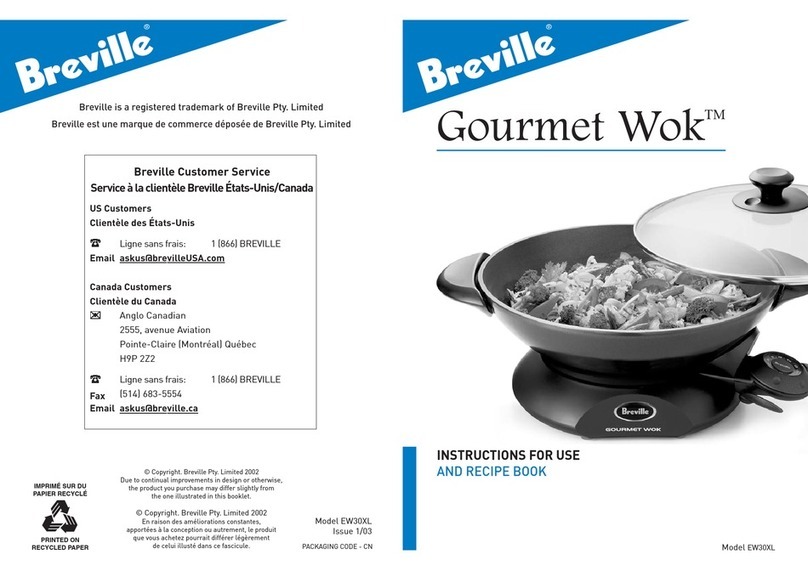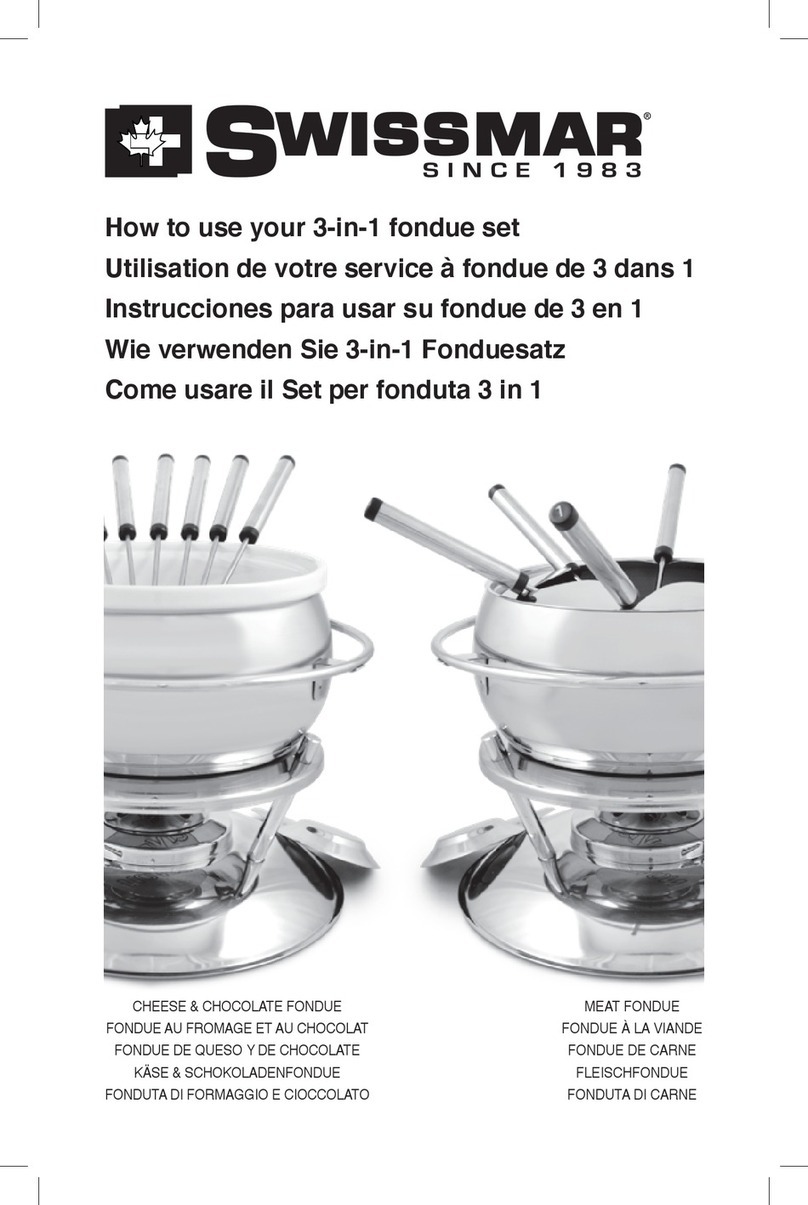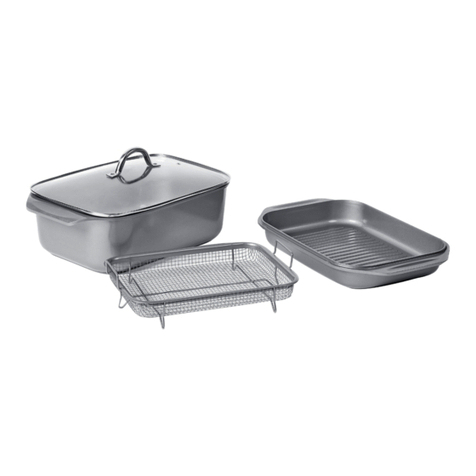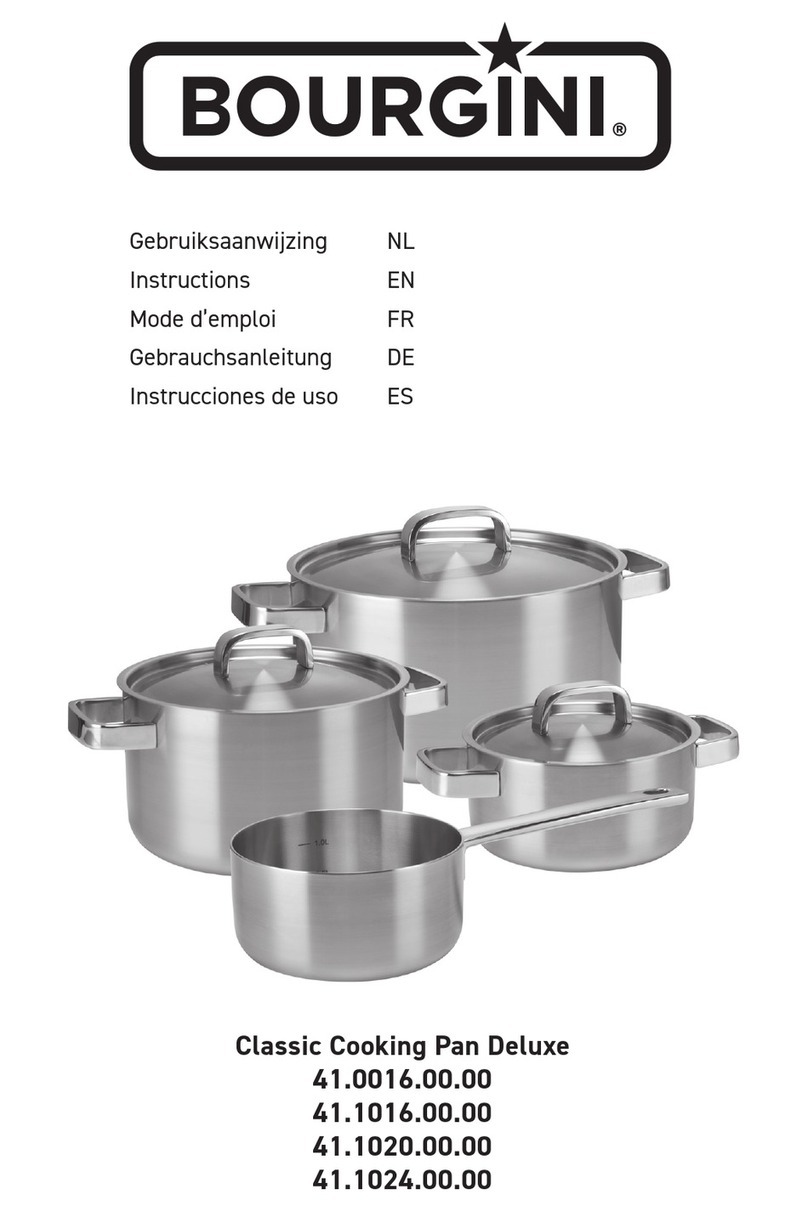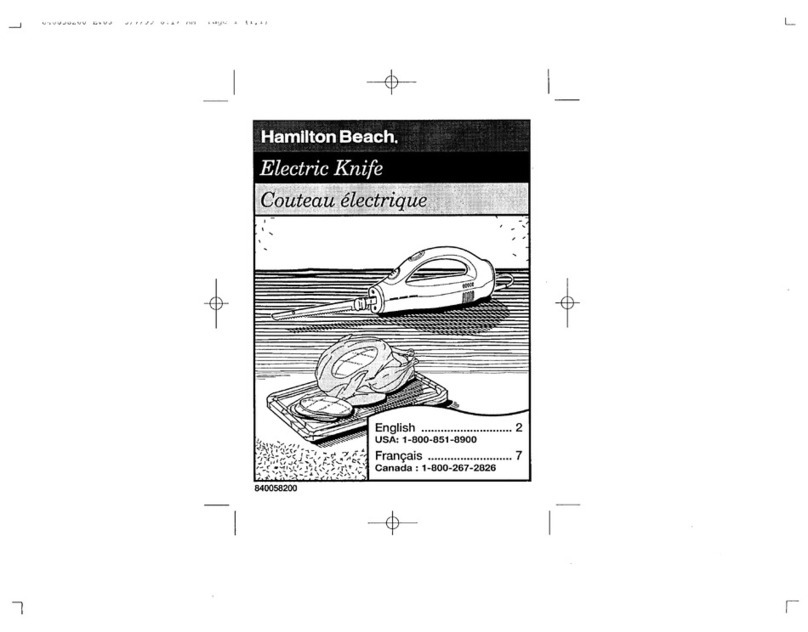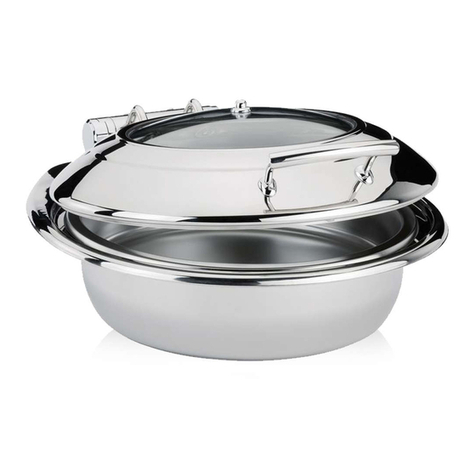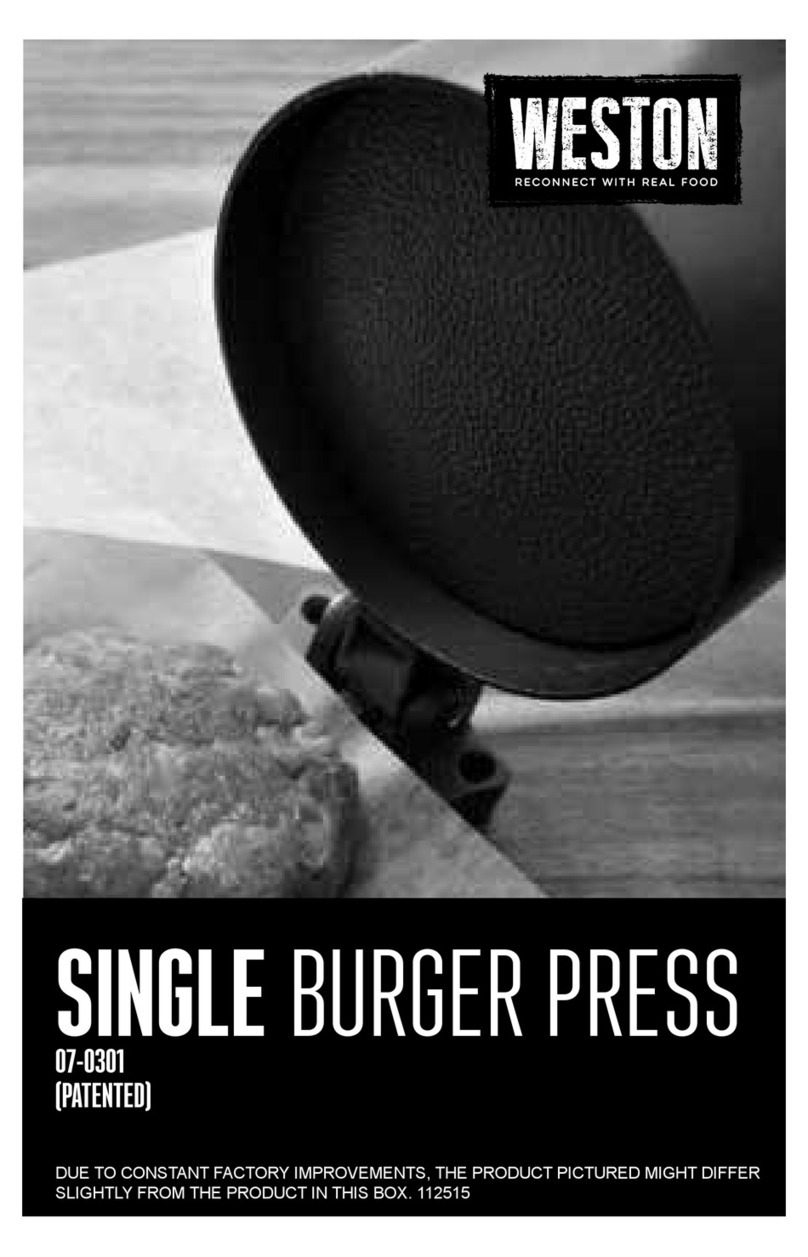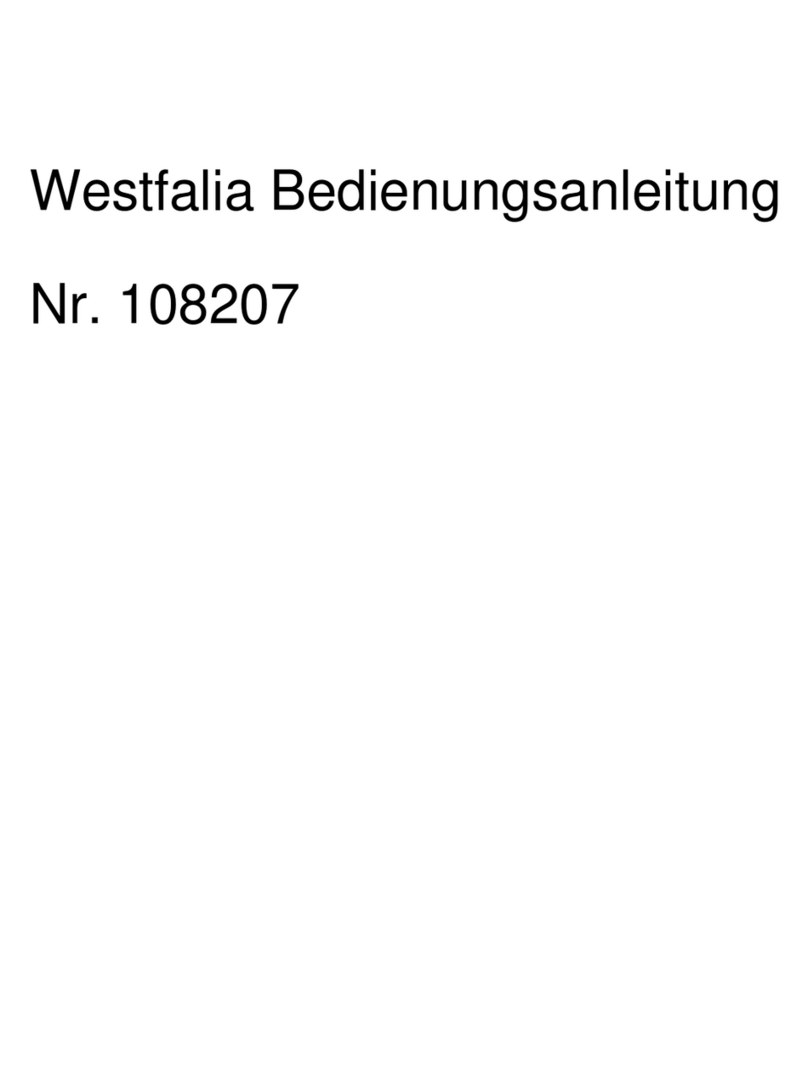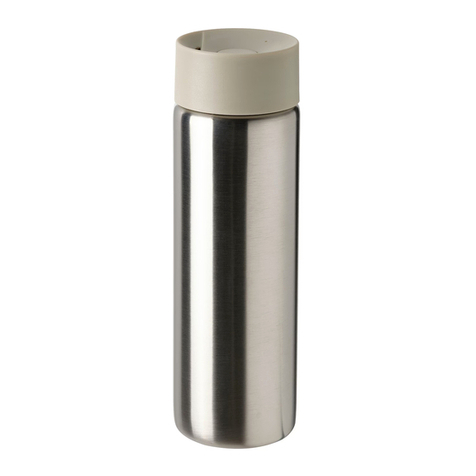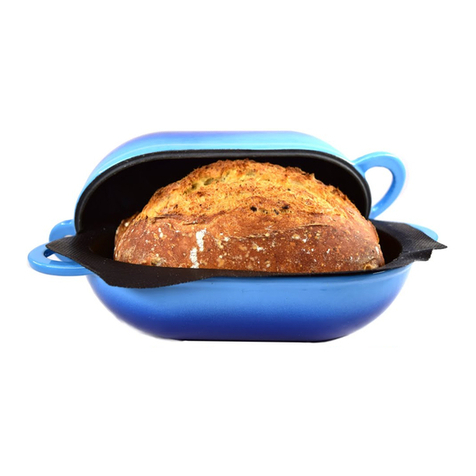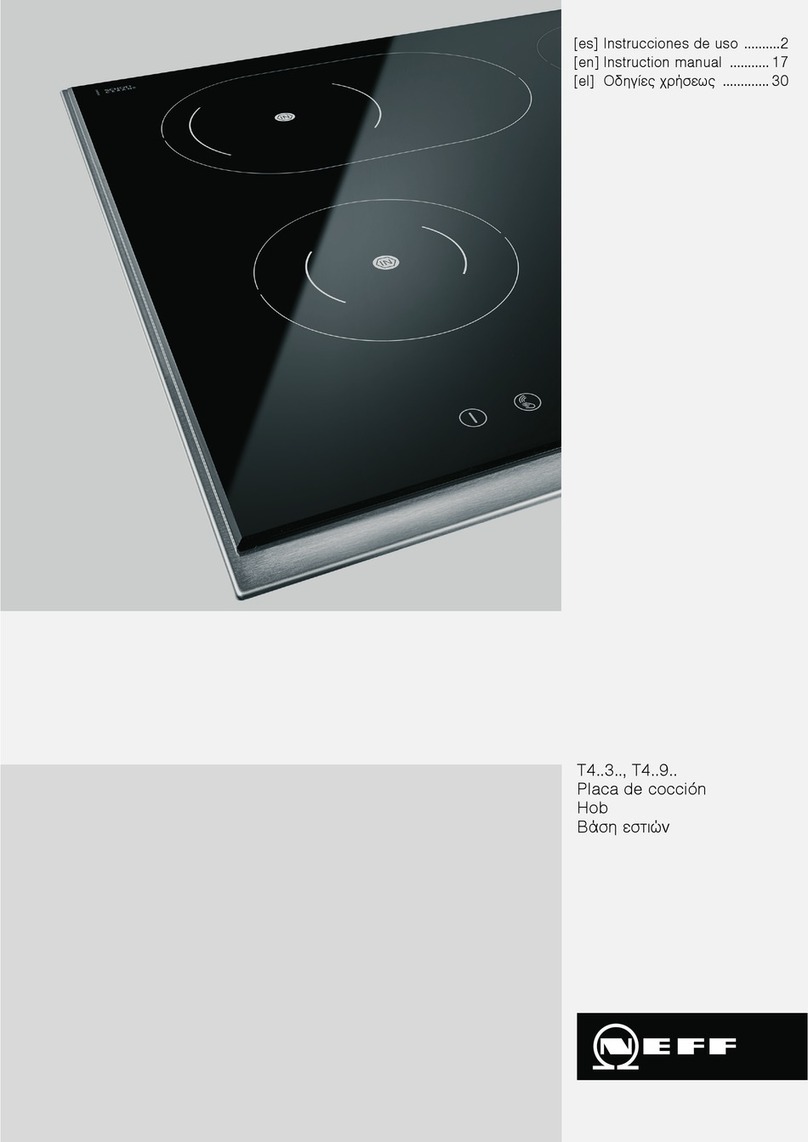IF YOUR COOKWARE IS STAINLESS STEEL
For regular care, clean your pans with hot water, liquid detergent and a
sponge (scouring powder and scouring pads are not recommended).
Clean pans thoroughly with a special cleaning agent for stainless
steel cookware.
The following may occur due to inadequate cleaning or leaving to boil dry:-
- White spots (e.g. from boiling potatoes), white fine scale, rainbow
effect/iridescent glints, brown drying rings (watermarks).
- A blue or yellow discolouration may appear on your products; this is a
natural occurrence with stainless steel pans, due to overheating and
is in no way harmful.
- All the above can be removed with a special cleaner for stainless steel
pans. Lemon juice or white vinegar can also be added to the cleaner
if desired, for best results.
Application of white vinegar may remove some of the discolouration in
the first instance without use of the above.
Never use bleach or chlorine based products on your pans as it is
extremely corrosive to stainless steel, even when diluted. It will cause
tiny pits to appear in the surface of the steel which may be unsightly
and will affect the cooking performance.
If you burn food in pans which have a stainless steel interior, fill them
with warm water and washing up liquid and leave to soak for about an
hour. Afterwards wash them with washing-up liquid and a sponge.
Hard to remove food deposits may require soaking in hot soapy water
to loosen, if soaking is not enough, scrub with a non-metallic scouring
pad suitable for the purpose.
Do not allow to boil dry as this may cause discolouration, damage to
the pan, and/or failure of the base.
In the event of overheating the cookware should not be moved but
should be left to cool first, due to the danger of the potentially molten
aluminium within the encapsulated base.
Avoid using your pans to store acidic, salty or fatty foods before or
after cooking.
Add salt to water only after it has come to the boil (to avoid salt grains
attacking the steel).
1234
GENERAL SAFETY ADVICE
Tefal cookware should never be used in a microwave.
We do not recommend using these pans for deep frying
(e.g. chips, samosas etc.).
Never leave the handle of your pan sticking out over the
edge of the hob.
Exercise due care when cooking near children, animals
and certain handicapped people. Never put a hot pan on
the floor or near the edge of a kitchen surface. Let it cool
down and keep out of reach.
Use a lid to prevent burns caused by splashing.
By following these care instructions, you will prevent the
emission of fumes from pans and food that have been
overheated. These fumes could be dangerous for animals
with very sensitive respiratory systems such as birds. We
recommend that birds should not be kept in the kitchen.
Care should always be exercised when cooking with oil,
the pan should not be overfilled or too high a heat used
(consult oil manufacturer’s information).
In general, we recommend using oven gloves when
holding handles and knobs.
In the event of a pan fire turn off the heat supply and
place a dampened towel over the pan and leave for 30
minutes before removing.
Never leave food cooking unattended.
BEFORE FIRST USE
Remove all packaging, stickers, labels and tags.
Wash in warm, soapy water, rinse and dry thoroughly.
Before using non-stick interiors for the first time, condition the pan
by spreading one teaspoon of cooking oil over the interior with a
clean cloth. Wipe off any excess.
USING YOUR COOKWARE
Choose a suitable sized flame or ring for the base of the pan
(this prevents damage to the handle and coating).
Do not allow a gas flame to show around the sides and base of
the pan.
Never heat fat or oil to the extent it smokes, burns or turns black.
Never cook on a high heat – in excess of 190ºC – as this may damage
the non-stick coating, burn food, produce stains or damage the base of
the product.
Milk scorches easily. Heat over low to medium heat until bubbles form
around the edges.
After prolonged usage some minor discolouration of the non-stick
coating may occur. This is quite normal and will not affect the non-stick
properties of your cookware.
Never heat an empty pan or allow to boil dry. This may damage the
coating or base.
Do not allow handles to come into contact with direct heat or flames.
Depending on the range (check the packaging), most metal utensils can
be used except knives and whisks. However, care should be exercised
when using any metal utensil. Avoid using sharp edged utensils, and
avoid cutting directly in the pan. Do not gouge the non-stick surface.
To avoid spillage, do not fill the pans more than two-thirds full.
Wait for sugar and rock salt to dissolve before stirring in the pan (if not,
the grains may scratch the surface).
Unless otherwise stated only use your Tefal pans on a hob and not
in an oven. (see section “Handles, Knobs and Lids”).
CLEANING YOUR COOKWARE
After each use, wash the inner and outer coatings of your pan with hot
water, liquid detergent and a sponge. Rinse and dry thoroughly.
Do not use metal scouring pads, abrasive wire wool or harsh
scouring powder.
Never put cold water into a hot pan or plunge hot cookware in cold
water. Sudden changes of temperature may cause metal to warp,
resulting in an uneven base.
Do not soak the outside of your pans for an extended period due to
some aluminium fixings. Always dry your cookware thoroughly.
DISHWASHING
You can put your pan in the dishwasher, but hand washing is
recommended to preserve the appearance of your cookware (see
section “Handles, Knobs and Lids”).
If placed in the dishwasher the outer coating may become dulled and
discoloured due to the action of certain detergents. Our warranty does
not cover this type of wear, however the performance of the pan will not
be affected.
To maintain the performance of the non-stick coating, repeating
‘conditioning’ after dishwashing is recommended (see “Before First Use”).
Do not leave your cookware in the dishwasher after the cycle has finished.
NON-STICK INTERIORS
Repeat conditioning regularly (see “Before First Use”).
Due to Tefal’s superior non-stick they are quick and easy to clean by
hand washing.
A build up of residue or scale may form inside the pan. This is often
seen when a pan is continually used for boiling vegetables and hard
water is used. To remove these deposits use diluted white vinegar or
lemon juice. To resolve the problem we also suggest that a little cooking
oil is spread over the non-stick coating after washing and drying to
re-condition the non-stick surface.
IF YOUR COOKWARE IS HARD ANODIZED
Tefal has developed a revolutionary process, which has made anodized
cookware dishwasher safe. The process involves the application of an
exterior coating which protects your cookware from the harmful
consequences of dishwashing. It is therefore extremely important not to
damage this coating and we recommend that you avoid the use of
abrasive scouring pads and that washing by hand is preferable
whenever possible. If, however, you do hand wash your pan using a
scouring pad, we strongly recommend that you no longer wash it in the
dishwasher as the exterior coating may have been damaged.
Slight surface marks or abrasions are normal and will not affect the
performance of the exterior coating.







